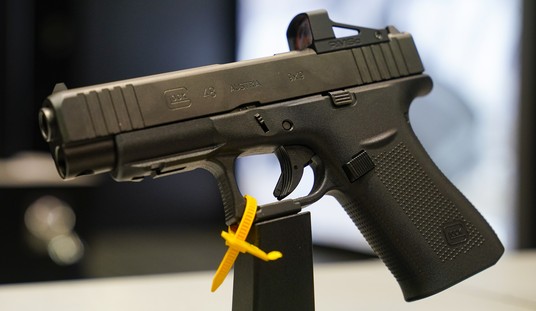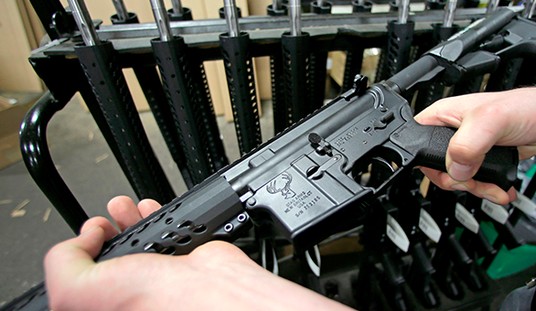Earlier this week, a man in an SUV attempting to drive through an intersection blocked by protesters in Provo, Utah was shot. On Tuesday, police arrested 33-year old Jesse Taggart, a resident of Salt Lake City who was part of the protest against brutality. According to the Associated Press, Taggart doesn’t have any formal affiliation with any of the protest groups, including Black Lives Matter, but had been taking part in the protest for most of the evening when he not only allegedly wounded the driver of the SUV, but smashed in the window of another car with his handgun.
Tensions were high in the city on Wednesday, and that evening, as a couple hundred protesters once again gathered outside of police headquarters in Provo, close to one hundred pro-police demonstrators rallied across the street. There were some shouts and taunts on both sides, and at one point a pro-police demonstrator tried to confront one of the organizers of the anti-police rally. Tensions were high throughout most of the evening, but several hours in to the protest something amazing happened; the yelling turned to talking.
Salt Lake City’s KSL described the moment things turned from bad to better:
[Anti-police protest organizer] John Sullivan and other event organizers yelled into a bullhorn at the handful of counter-protesters that remained on the opposite street corner of 300 West and Center Street. He asked if anyone wanted to say something, to address the crowd, free of retribution and with the utmost safety in mind after more than three hours of protests.
Wednesday’s demonstration was, after all, a free speech zone protected by the First Amendment, and so it was only fair.
So John Fitzpatrick, a member of the nascent militia group Keepers of Liberty who attended the rally, stepped forward and began walking to the crowd. A few hesitated to let him pass, likely because of the firearm strapped to his back. But at the behest of group organizers, they ushered him and his friend Tyler Warner to the front of the crowd of just over 100 individuals.
And as Fitzpatrick tried to scale the 5-foot retaining wall in front of the Provo police station, he slipped. Whether because of the 70 pounds of gear and body armor he wore, the firearm nearly the length of his wingspan, or simply because he lost his footing, Fitzpatrick started to fall.
One protester reached down and caught him — then hoisted him up, gear and all.
The two embraced. The crowd cheered.
In that moment, Fitzpatrick wasn’t pro-police anymore than the protester who stopped his fall was anti-police. One was a man who was falling, the other a guy who could catch him. It was a moment beyond politics, labels, and ideology, and that momentary connection was strong enough for the crowd to feel it too. That’s when the conflict turned into a conversation.
As music from a nearby coffee shop on 300 West and Center Street blared loud music, attempting to drown out the demonstration, Fitzpatrick shouted into a bullhorn he had never used before to “the largest crowd I’ve spoken to since the third grade.”
He asked for unity, introduced his group, and tried to start a dialogue with those on the other side of the street — and, in some cases, the other side of the aisle.
“Everybody was staying so divided, and I had to jump in and do something,” said Fitzpatrick, who lives in Woods Cross. “By the time we got here, everybody had moved to the courthouse — so we jumped in and took a knee with them just to get in there and bridge that gap,” he said. “I have my own personal opinions on how everything goes, but that’s how you create a dialogue. A small compromise goes a long way.”
Black Lives Matter protesters were listening to Proud Boys, socialists were talking to militia members, and amazingly enough, tensions didn’t escalate, even though both sides found common ground in going armed.
Both groups also carried firearms; while several counter-protesters that met in front of the Old Provo Courthouse dressed in camouflage and carried rifles with tape that read “live ammo,” a handful of protesters in support of racial equality could be seen with handguns strapped to holsters.
Both openly said they hoped not to use the weapons.
“The narrative that protesters are violent is a lie,” said Lex Scott, the Black Lives Matter Utah founder who came to support the demonstration in Provo. “We’ve been protesting peacefully, and we are fighting against police violence. So I came down here to support the peaceful protesters today.”
Scott made it a point to carry her own firearm, holstered to her hip the entire evening, to Wednesday’s protest. She did it so as not to be intimidated by a group that would carry arms, but also because “Black people have a Second Amendment right to bear arms, too,” she told the demonstration at one point.
There’s that unity thing again.
More than Sullivan and the protest organizers spoke to the group. In addition to Fitzpatrick and Cisneros, there was Tango, a Los Angeles native and Black business owner in Utah, who stood on the wall with a microphone and an American flag. A veteran of the Iraq War also called for unity and an end to violence.
Like Fitzpatrick, many of the counter-protesters call themselves patriots. But a true patriot is one who finds compromise to make society better, he said.
“We want to interact and create dialogue with the other side,” he added. “It turns out, we all just want to be left alone.”
To be fair, I don’t think that everyone wants to be left alone. Cancel culture isn’t about being left alone, and it damn sure isn’t about leaving other people alone. The news media thrives on conflict and chaos, so they have a vested interest in fostering a culture where we’re too angry to talk with one one another so we scream at each other instead. There are also genuine and deep disagreements on many issues in this country, and even if we can talk about them with each other, it doesn’t mean we’re going to agree.
We also have to acknowledge that there’s a small number of people in this country who really are intent on a revolution, and they can be found on both sides of the political aisle. These aren’t folks who can be reasoned with, but they don’t want any of us having a conversation either. They need conflict like a fish needs water. It’s a fundamental part of their ecosystem.
There’s a far larger pool of Americans on either side of our political divide who aren’t interested in burning it all down, but also aren’t happy with what they’re seeing on the streets. In some cases that might be police brutality, in others the wanton destruction of businesses or the tearing down of statues and memorials. I happen to think many Americans are actually bothered by both of those things.
This isn’t really the place for a deep dive into the psychology of mobs, but suffice it to say that instigators can and have helped turn crowds violent over the past month. Those instigators, along with the media and weak-kneed politicians, have also helped establish a cultural expectation that if you go out to one of these protests, you should be prepared to engage in acts of violence, or at least stand by while they happen. The protesters on both sides in Provo on Wednesday night interrupted that cultural conditioning thanks to their willingness to get to know each other a little better.
I believe a civil conversation beats a civil war any day, and I’m growing increasingly concerned about the latter as the former becomes harder to find. As a Second Amendment supporter it makes me proud that armed Americans on both sides of the policing issue were able to come together to talk and listen to one another for at least a few minutes on a beautiful summer night ,where just a day earlier a man had been shot in rage simply for trying to go home.
I truly do believe that the Second Amendment community is more diverse than any other in the United States today, and it may very well be that it’s gun owners from across the political spectrum who can de-escalate the violence and hostility in today’s politics by using that common ground as a starting point for discourse and engagement in areas of disagreement.
A right wing militia member and a left wing Black Lives Matter protester may see each other as the enemy, but if they can start on that common ground of a right of self-defense and the right to keep and bear arms they might find it a little bit easier to stop yelling and start talking. I keep thinking back to that moment when John Fitzpatrick was falling and hands reached out to catch him. A little moment like that might not change the world, but we’ve seen that it can help turn a conflict into a conversation, and with gun owners on both sides leading the way what happened in Provo on Wednesday evening doesn’t have to be a one-time thing.








Join the conversation as a VIP Member